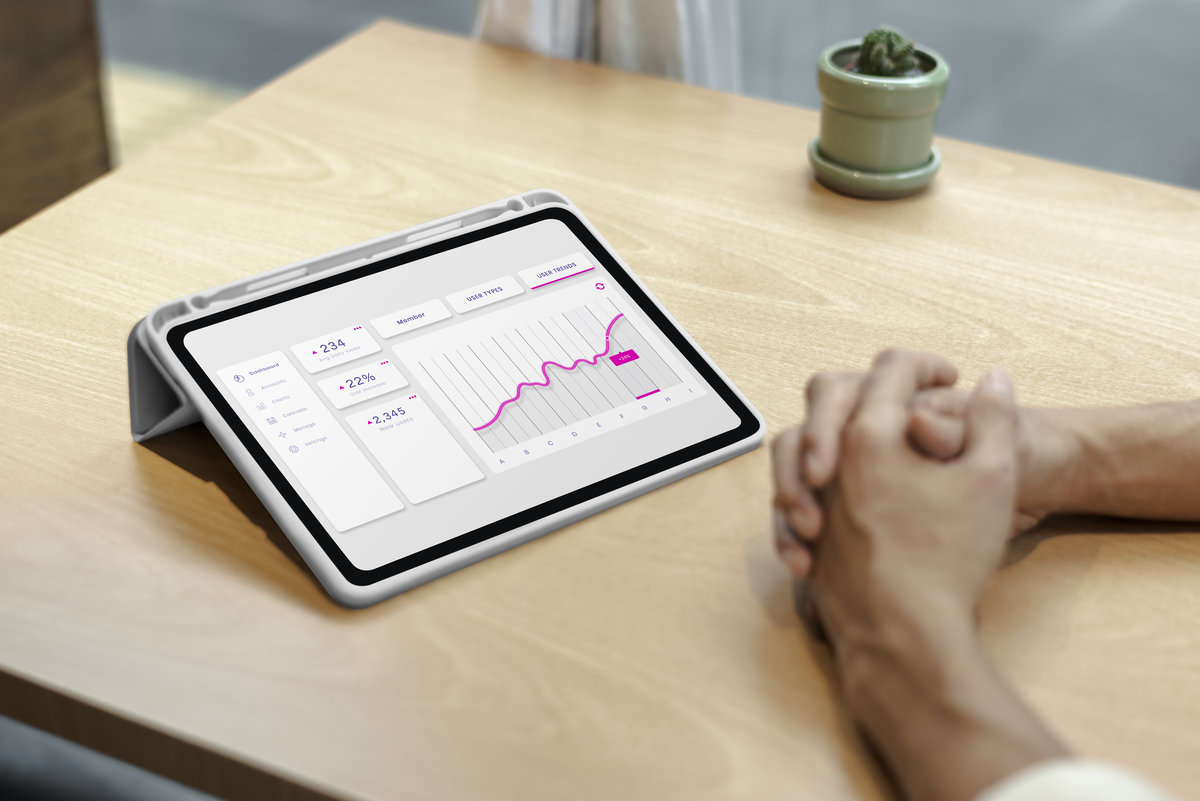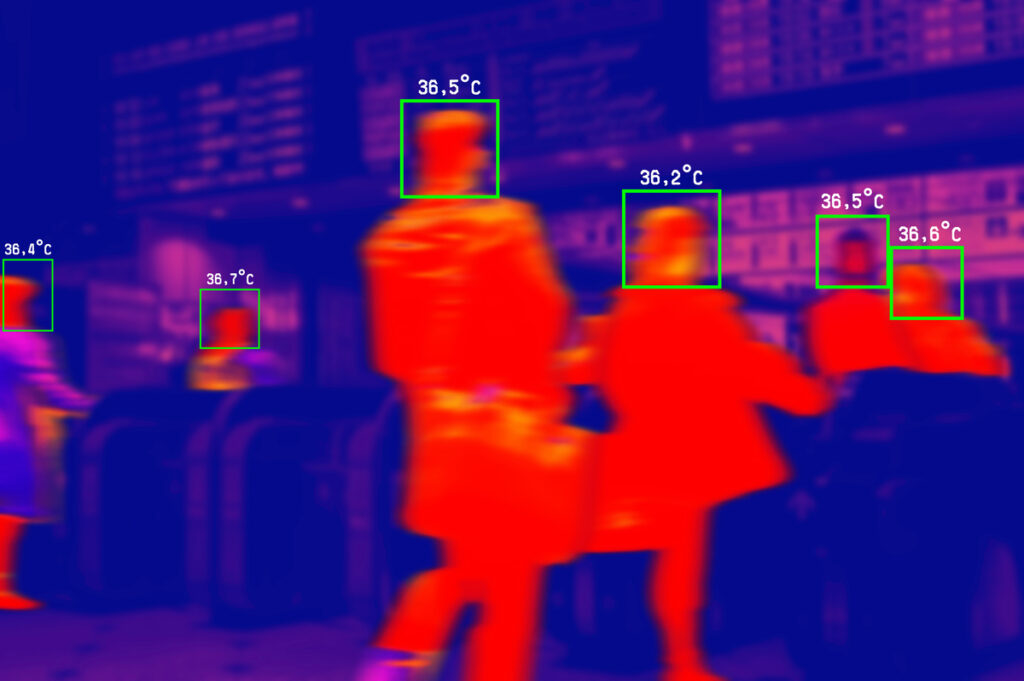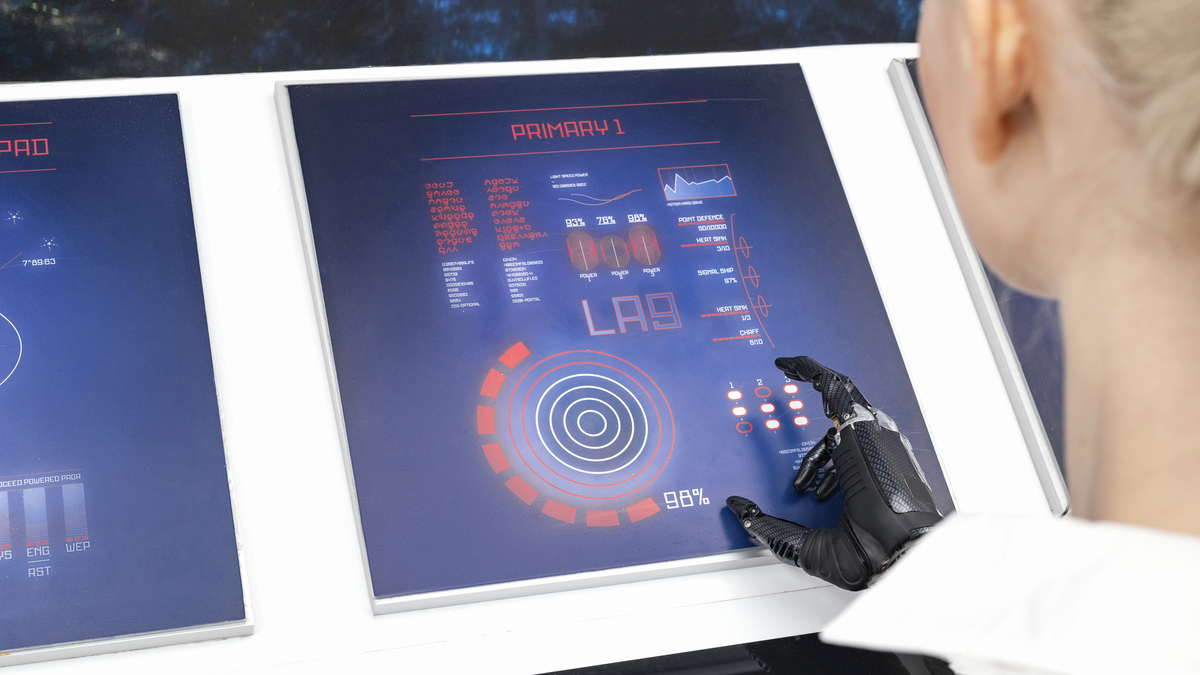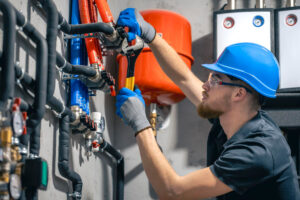Digitalization and developments in the information and communication technology sector play a critical role in improving the efficiency of the European energy market and remaining in the current progress of sustainable and renewable energy systems. As a result, the need to invest in smart, energy-efficient technologies in buildings has grown in recent years to improve occupants’ health and convenience and reduce energy consumption and carbon emission impacts.
Architecture of the future will offer a degree of comfort and luxury that is only made feasible by modern technological developments, particularly in the area of the “Internet of Things,” or IoT. Both residential and commercial buildings will be covered by this. In addition to being able to tailor the environment to each individual’s preferences and tastes, these state-of-the-art “Smart” buildings will be outfitted with a wide range of internet-connected Edge devices and sensors that can forecast and analyze usage patterns in order to preserve limited resources like energy and water and to improve the overall resilience and safety of the building’s residents.
As a result, the European Union Member States are required to establish an optional common scheme for defining and calculating a descriptor, called a Smart Readiness Indicator (SRI), to assess the capabilities of buildings to adapt their operation to the needs of the occupants and the electricity grid and to achieve more efficient operation.
Table of Contents
What is the SRI, or Smart Readiness Indicator?
The concept of “Smartness” describes a building’s capacity to perceive, comprehend, convey, and react to changes in its technological systems’ functioning, the external environment (including energy grids), and the needs of its occupants.
Buildings (or building units) are rated by the Smart Readiness Indicator (SRI) according to how well they can perform three primary duties. Optimize energy efficiency in buildings and the performance of the system that is currently in use. Adapt their operation to the needs of the occupant. Adapt to signals from the grid (like energy flexibility).
The Smart Readiness Indicator (SRI) will increase public awareness of the advantages of smart building technologies, including building automation and electronic building system monitoring for HVAC, lighting, ventilation, and hot water. By encouraging the integration of cutting-edge smart technologies into buildings, the SRI framework is used to promote technical innovation in the construction industry.
A smart building is one that adjusts its operations to meet the demands of the grid (smart meters, demand response), the building itself (internet-accessible building management system), and its users (demand response for HVAC and lighting systems, for example). Electronic systems and information and communication technologies are used to accomplish this. The creation of a voluntary European standard for grading buildings based on their degree of smart ready was mandated by the EPBD.
Suggested article to read: Construction HVAC Systems; Ultimate Guide for 2024
The Smart Readiness Indicator (SRI) attempts to provide building owners, tenants, and users with a more tangible comprehension of the value addition that smart buildings provide. The European Commission mandated a collaboration (VITO, Waide Strategic Efficiency Europe) to create and evaluate the voluntary project. The suggested SRI method employs a qualitative labeling system.
The examination of a building’s smart ready services’ functionality forms the basis of the Smart Readiness Indicator (SRI) assessment process. Any service can have different “Smartness” or “functionality levels” assigned to it. The nine domains that make up the smart ready services are as follows:
- Heating and Cooling
- The home’s hot water
- Controlled airflow
- Brightness
- Flexible building envelope
- Energy for charging electric cars
- Monitoring and overseeing
There are two to five distinct functionality levels for each of the smart ready services. “Smarter” services are those that are provided at a higher functionality level and typically benefit building users or the grid more than those that are provided at a lower functionality level.

Boosting Constructions’ Intelligence
Smart buildings, both freshly constructed and retrofitted, will play a critical role in our energy system in the future. Among other modern ICT-based technologies, the Internet of Things and smart energy management systems have made it feasible to efficiently control and monitor a building’s energy efficiency and flexibility.
Energy consumption and carbon emissions are reduced, all customer needs are satisfied, and you save money on your energy bill thanks to smart applications. Smart appliances, solar panels, energy systems, heat pumps, and other household products are some of the advantages of smart buildings. The Smart Readiness Indicator (SRI)’s objective is to raise the concrete added value of smart building features for building renters, owners, occupants, and smart service providers.
More precisely, it offers data on the extent to which technologically advanced buildings can communicate with their inhabitants as well as the energy system. In a similar vein, it emphasizes how ICT technology may improve building functionality and enable more effective operation. Through the development of a reliable and comprehensive instrument, the SRI can encourage the adoption of technological innovation and smart ready technologies by giving all relevant stakeholders a shared language.
Suggested article to read: Building Energy Optimization; Comprehensive Guide 2024
Using Smart Readiness Indicators
For example, each service can be applied to multiple intelligence levels (referred to as “functionality levels”). Take lighting control, for instance. “Manual on/off control of lighting” is a simple example; it can be as sophisticated as “Automatic on/off switching of lighting based on daylight availability” or even “Automatic dimming of lighting based on daylight availability.” The suggested procedure is easy to understand. The first step in assessing a facility’s Smart Readiness Indicator (SRI) is determining which services are ready. These fall under a number of categories (such as lighting, heating, electric vehicle charging, etc.).
After the services provided by a facility are identified, the impact score is calculated using various impact criteria (e.g., energy savings, increased comfort, flexibility with regard to the energy grid, etc.). These effects and attributes are then combined using a checklist to produce a final score that indicates the level of preparedness of a building; the result can be displayed as a relative score, an overall single score, or a label classification (e.g., SRI label class “B”) (e.g., showing that a building achieves 65% of its possible smartness impacts); sub-scores, like 72% for energy savings and 63% for comfort, can also be displayed.
Where to find Full Smart Readiness Indicator (SRI) Methodology
The Commission Delegated Regulation (EU) 2020/2155 established a uniform method for computing the Smart Readiness Indicator (SRI). Among other things, its annexes contain general recommendations for the calculation of smart readiness scores, the weighting of impact criteria in significant functionality, the weighting of technical domains, and the smart readiness rating. The information contained in these annexes makes up the SRI legal framework.
The SRI technology architecture consists of the capability levels, weighing criteria, and library of smart-ready services, both mandatory and voluntary. A general technical framework has been prepared at the EU level based on the results of a technical research study on the SRI that was carried out in 2019–2020. You can get it upon request if you fill out this form.
Smart Readiness Indicator (SRI) for Mediterranean
The European Commission Directorate-General for Energy devised and created a technique for calculating this indicator, which is heavily dependent on a number of variables, including the kind of building and the local climate. The weighting coefficients, which the legislator must first define, represent how effective these criteria are on the Smart Readiness Indicator (SRI). Thus, testing this technology in diverse settings—such as different building kinds, climates, etc.—is the primary way to determine its viability. In order to achieve this, two service buildings situated in a Mediterranean-climated area and featuring varying energy and interior environment quality performance levels are using the suggested methodology.
The biggest distinction between building behavior in the Mediterranean region and the rest of Europe is the increased need for cooling during the region’s long, hot summers. Thus, employing efficient technologies to lower the need for cooling, enhance indoor air quality, and offer occupants thermal comfort is one of the primary goals of building retrofitting in the Mediterranean region. The impact of window size, thermal insulation thickness, and building orientation on the energy efficiency of residential structures in the Mediterranean region was examined by Jaber and Ajib.
Lollini et al. also covered the potential financial gains and energy enhancements associated with utilizing high performance thermal insulation in residential building envelopes in Mediterranean climates. According to a different study, boosting the building envelope’s thermal performance in the Mediterranean region can have a significant impact on improving internal thermal comfort while having less of an impact on energy savings. Investigations were also conducted into the potential effects of implementing passive cooling strategies in Mediterranean residential buildings and educational institutions.
SRI for Mediterranean Approach
A recently updated element of the EPBD mandates the creation of an optional European Smart Readiness Indicator (SRI) scheme as a common language for assessing a building’s ICT and electrical system capabilities. This indicator serves as a tool to support anticipated assessments of smart building objectives concerning energy generation, storage, and fault diagnosis enhancements, in addition to promoting a more convenient, comfortable, and healthy living for the inhabitants.
The Smart Readiness Indicator (SRI) Computation
The pertinent smart services in each building were chosen in the triage process as the initial stage of the SRI assessment. This was done by reviewing the technical documentation for the buildings, conducting an on-site inspection, and speaking with the technicians about the buildings. Based on the levels specified in the catalogue for every case building, the functionality of each service was rated.
Evaluation of the effects of common building energy performance and indoor environment quality improvement methods on the degree of smartness, particularly in the Mediterranean climatic region, is made possible’ more efficient energy performance.
Impacts of Smart Ready Indicator
Member states are required to develop long-term plans to integrate energy systems in safer, more sustainable, and low-carbon buildings by 2050, in accordance with the European Energy Efficiency in Buildings directive.
This method identifies and assesses a building’s smart readiness as well as its ability to adjust its operations in response to network and occupant needs using a shared, optional regime. The smart readiness indicator (SRI) was created as a result. The assessment of a building’s technological preparedness is based on the existence and functionality of different smart services, with the objectives being energy efficiency, user-friendliness, and energy flexibility.
Suggested article to read: Reduce Carbon Emission in Construction; Ultimate Guide in 2024
The Smart Readiness Indicator (SRI) has a number of effects on both the energy grid and its customers. Consideration has been given to seven impact categories:
1. Energy Savings on-site
This impact category deals with how the smart ready services affect the ability to save energy. The only thing considered is how smart ready technology, such better temperature control throughout rooms, affect a building’s total energy performance.
2. Flexibility of the Grid and Storage
This impact category deals with how services affect the building’s ability for energy flexibility. In addition to energy networks, the report recommends taking into account the flexibility offered by district heating and cooling systems.
3. Coziness
This impact category covers the effects of services on occupant comfort. The idea of comfort, which includes both conscious and unconscious perception of the physical surroundings, includes thermal comfort, acoustic comfort, and visual performance (i.e., having enough lighting levels without glare).
4. Practicality
This impact category addresses the degree to which services “Make life easier” for users, such as in the case of TBS, by needing fewer manual interactions.
5. Well-being and Health
This impact category includes how services affect the health and well-being of tenants. Better interior air quality, for instance, can be achieved with smarter controls than with traditional ones, directly improving the health and well-being of tenants.
6. Upkeep and Error Forecasting
Automated fault detection and identification has the potential to significantly improve technical building systems’ functionality and maintenance. It might also affect the energy performance of the technical building systems by identifying and fixing wasteful operation.
7. Details for Tenants
This impact category covers the effects of services on informing building occupants on the operation of the facility. The first step in calculating the Smart Readiness Indicator (SRI) score is to assess each smart-ready service. This involves looking at the building’s services and figuring out how functional they are. Once the effect scores of these individual services are known, an aggregate impact score for each of the nine smart-ready domains is calculated.
The domain impact score is calculated as the ratio (expressed as a percentage) between the individual service scores for each domain and the theoretical maximum individual score. The overall impact score for each of the seven impact categories is then calculated using the weighted total of the domain impact ratings. The SRI score is then calculated using the weighted total of the seven overall impact scores.
Suggested article to read: Zero Energy Buildings (ZEB); Comprehensive Guide 2024
Smart Readiness Indicator (SRI) Calculation
An evaluation of “Smart-ready services” in the nine technological areas of electricity, electric car charging, monitoring, control, dynamic building envelope, lighting, ventilation, heating, cooling, and ventilation is the foundation of a Smart Readiness Indicator (SRI) assessment.
The success of each service is assessed using the seven desired impacts of smart buildings: energy efficiency, maintenance and fault prediction, comfort, convenience, health, well-being, and accessibility, information to occupants, energy flexibility, and storage.
The Smart Readiness Indicator (SRI) score and total SRI class, which are obtained from the smart-ready evaluation findings, indicate how close the building is to optimal smart readiness. Additionally, specific scores are calculated for each of the three primary building intelligence attributes.

Is it Possible for the Smart Readiness Indicator (SRI) Methodology to Shift?
After extensive stakeholder consultations throughout Europe, the general, EU-level technical framework of the Smart Readiness Indicator (SRI) was developed. Based on feedback from the LIFE project activities, official test phases carried out in EU member states, and other stakeholders, the framework may be improved.
In order to facilitate conversations between EU member states and interested parties on a variety of Smart Readiness Indicator (SRI) subjects, including potential modifications to the overall technological framework, the SRI platform was established in December 2021. All parties interested in following the development of the SRI approach are welcome to attend the biennial plenary sessions hosted by the SRI platform. Finally, national authorities may choose to create a national technological framework of their own.
Conclusion
Since the European Union (EU) is the world’s largest energy market and heavily depends on imported energy, primarily from Russia and the Middle East, access to sustainable energy sources has long been a major concern for developed and industrialized nations. Concerns about the environment are also turning into a major global issue. One of the biggest energy users and greenhouse gas emitters in Europe is the stock of residential buildings, which is still incredibly energy inefficient.
The revised EPBD introduced the concept of a smart readiness indicator (SRI) as a cost-effective measure to help reduce energy consumption and carbon impacts, allow integration with renewable energy sources (RESs), and provide healthy and comfortable living conditions. Smart Readiness Indicator (SRI) was introduced as a tool to assess whether a building can adapt its operation to the needs of the occupants and the grid and to improve its energy efficiency and overall performance.
However, the most important step in developing relevant technologies and systems related to smart-ready buildings is to have a unity interpretation of smart buildings as a reference. Although there has been a legitimate concern in various studies to discuss smart buildings, the definition of smart building frequently differs between the publications.
Suggested article for reading:
Top 24 Sustainable Construction Technologies in 2024
Sustainable Construction Technology; Ultimate Guide in 2024
Resources:
MDPI | Rehva | BMK | Euroheat | ComfortConsulting | ScienceDirect | Wuerth | Mendeley | Energy.ec.Europa | EnergyVille
For all the pictures: Freepik






